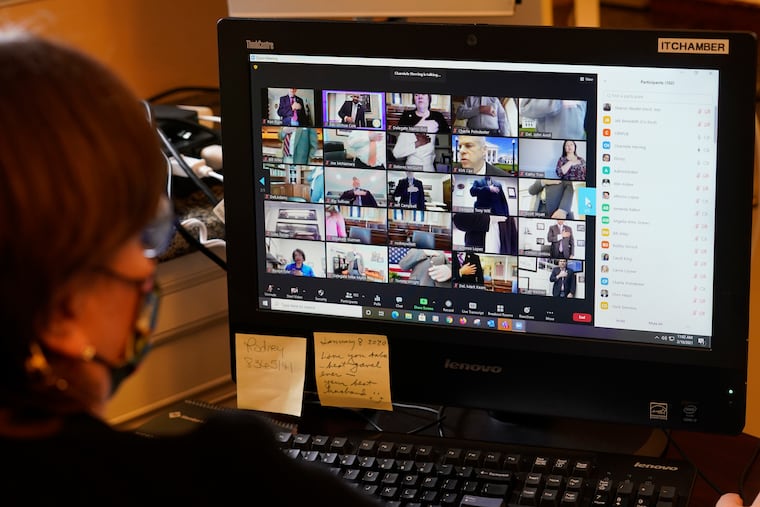From anxiety to eye strain, Zoom burnout is real. Here’s how to practice self-care.
According to Jeremy Bailenson, a communication expert at Stanford, Zoom fatigue also comes from feeling trapped in an intimate personal space while being constantly watched by others.

Remote work is here to stay, as many companies have seen the cost efficiencies and flexibility it offers. That means days that feel like a “screen marathon” may continue for some time. Fortunately, there are ways we can reduce the strain.
To fully appreciate Zoom self-care, it’s important to understand why it wears us out — and consider the remedies as we go.
The problem: eye strain. Back-to-back Zoom meetings can really challenge our eyes. The American Optometric Association warns that spending two or more continuous hours of looking at a screen places us at a greater risk of developing digital eye strain.
Tip: Take regular screen breaks. The AOA recommends looking into the distance for 20 seconds after 20 minutes of viewing, and resting your eyes for 15 minutes after two hours of continuous computer use.
The problem: sitting for extended periods. The rest of our body suffer too when we sit for extended periods of time. Studies have linked a sedentary lifestyle to diabetes, cardiovascular problems, weight gain, and depression.
Tip: Build “movement breaks” into meetings. Get up to stretch and move around at least once every 30 minutes. Set alarms on your phone to remind yourself and let others in the meeting know about your plan. This could help create a new “movement norm” among your colleagues.
The problem: provoking anxiety. According to Jeremy Bailenson, a communication expert at Stanford, Zoom fatigue also comes from feeling trapped in an intimate personal space while being constantly watched by others.
Imagine if a reality TV crew livestreamed you for hours each day. Now imagine if they asked you to position your face less than 60 centimeters away from the faces of everyone else in the room, a distance commonly used in intimate situations, such as with family members or loved ones.
You would probably feel uncomfortable, and for good reason.
Bailenson points out that this “staring intensity” and closeness can cause a high level of anxious arousal. Listeners in a Zoom meeting tend to feel like speakers on a stage, with a large audience within breathing distance.
Tip: Create more distance between yourself and the camera or place the camera in an off-center spot. This has the effect of extending your personal space, while allowing you to more naturally avert your gaze.
Tip: Make your meeting audio-only, turning off the camera occasionally. Organizations could also decide to schedule video-free meetings, especially if face-to-face connection isn’t absolutely necessary for reaching a goal.
The problem: A constant mirror. According to Bailenson, another major stressor in Zoom meetings is seeing yourself the entire time. Your video feed is always fed back to you, which has the potential to trigger self-evaluation and negative feelings.
Tip: Take Zoom “mirror breaks” by right-clicking your video and selecting the “Hide Myself” option. Others in the meeting will still be able to see you. You might also want to write some personal strengths down on sticky notes and put them on your monitor for an extra self-esteem boost.
The problem: transactional relationships. Video conferencing tends to create less personal, more task-oriented work environments, which can increase negative self-focus. We miss the relationship-building small talk that would happen around in-person meetings. As a result, it’s easier to feel conditionally valued for what we do rather than unconditionally valued for who we are.
Tip: Make meetings more personally affirming by starting off with a friendly off-task discussion, where each person in the meeting is acknowledged in a positive way. Pre-meeting breakout rooms that allow for audio-only positive chat in pairs, or among small groups of attendees, is another strategy.
While Zoom burnout is real, it is important to recognize the many ways this technology has helped us during an unprecedented crisis. Namely, it has kept lines of communication open, sustained our connections with others, and preserved jobs.
If we can live in greater harmony with our screens, adding some healthy modifications, we should be better prepared to manage the ongoing presence of remote work in our daily routines.
Scott Glassman is a licensed psychologist and clinical associate professor at the Philadelphia College of Osteopathic Medicine and creator of “A Happier You,” a seven-week program to strengthen positivity and resilience.